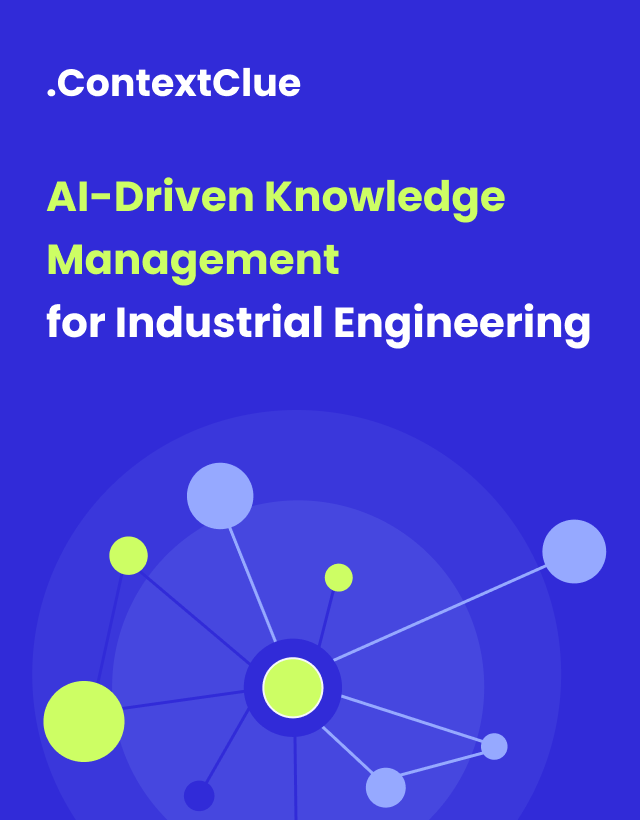
May 14, 2020
What is Workforce Management?
Author:

CEO & Co-Founder
Reading time:
8 minutes
After a short break, we return to HR. This is one of our favorite subjects, as machine learning and AI can significantly improve HR, and the results are clearly visible after a very short period of time. In this article, we are going to tackle the workforce management (WFM) question. What is workforce management in HR? What does workforce management do? And, finally, how can AI enhance workforce management? Let’s find out!
Workforce management is, in most cases, implemented via the dedicated software. Generally speaking, the whole point of implementing workforce management software into a company is to improve productivity and manage employees in an optimized way so that company works better and assigns various tasks to people who are most competent to deal with them.
Companies adopt workforce management for a couple of reasons:
- To ensure that they have enough staff available to serve their customers at all times,
- To train their employees and make sure they have all the necessary skills and competences,
- To optimize the workforce structure. In other words, to make sure that people doing a specific job have the necessary qualifications and will do this job in the best possible way,
- Last but not least, to improve the work-life balance of their staff and meet their needs.
Workforce management is particularly important in companies that deal with hundreds of queries and orders every day, and employ more than, let’s say, 200 people. Although, according to Enlyft.com[1], the workforce management software is most often used by companies with 10000+ employees and 1000M+ USD in revenue.

Looking at workforce management software users by industry, we find that the largest segments adopting this technology are[2]:
- Computer Software (16%)
- Banking (9%)
- Financial Services (9%)
- Telecommunications (8%)
- Insurance (8%)
- Retail (6%)
Also, some of the surveyed companies represent such niches as IT services, healthcare, aviation, and utilities.
What is workforce management in HR?
The workforce management software is frequently used to manage shifts and a number of people needed in a specific place at a specific time. To help you understand what role does WFM play in HR, let’s use a contact center example.
The contact centers (or helplines) ale separate companies, or departments within another large company, for example, telecom. Helplines employ hundreds of online/hotline consultants who answer incoming queries and, sometimes, also perform outgoing calls. In such a place, the workforce management software helps to ensure the right number of consultants are available to manage incoming calls. These estimations are done by forecasting the volume of calls, messages, or emails, and scheduling the correct number of agents needed to handle the expected volume of calls/queries/transactions.
Moreover, the workforce management software also helps track employees’ performance (daily, weekly, monthly) and indicate areas of possible improvement. Again, based on their previous work and results.
We can say that workforce management software is a combination of productivity measurement, traffic forecasting, and assessing the performance of the employees.

Let’s think for a while, what is workforce management in HR used for. We can indicate at least four vital elements.
Staff scheduling
Although at first, it may sound simple, it’s quite a complex task. There are lots of crucial aspects that have to be taken into account, i.a.: legal and contractual requirements, given a person’s qualifications, personal preferences, and availability. And then, it has to be put together with the company’s needs and other employees’ preferences. All in all, a lot of thinking required. That’s why staff scheduling is, in most cases, done by the dedicated WFM software.
Forecasting
You have to think about traffic forecasting as well. It’s all interlinked. If your forecasts are inaccurate, then the schedules are inaccurate too! Forecasting is usually done based on historical data. It’s a crucial element of the work optimization question. Simply put–it’s pointless to gather all your staff around noon when usually there are much fewer incoming calls, and then have no one on board in the afternoon, when the traffic significantly increases. That’s why you have to monitor your traffic constantly, capture trends, and act accordingly.
Performance measurement and management
It’s all about ensuring that your staff fulfill their duties and meet the targets and goals that they have been set. There are many factors considered in measuring each employee’s performance. They can comprise customer survey scores, a number of answered calls and their duration or a number of problems solved. If you possess accurate data regarding these questions, you can easily track every staff member’s performance, plan bonuses, and assign additional training. On the other hand, if a given employee’s performance decreases, you can react quickly and implement necessary recovery programs.

What is Workforce Management? Understanding Systems and Tools
Generally speaking, there are over 100 different[3] WFM programs and applications available on the market. Usually, they are cloud-based SaaS programs, priced on a per employee and/or per month basis.
Most of the WFM programs comprise such features as:
- Time and attendance tracking,
- Labor scheduling,
- Laws and regulations monitoring (labor laws above all),
- Sick-leaves and holidays management,
- Staffing optimization,
- Task management.
The most popular commercially available ready-made solutions are UltiPro, When I Work, Calabrio ONE, NICE inContact CXone, Ceridian Dayforce HCM, SAP Fieldglass, Kronos Workforce Ready, and Paypro Workforce Management.
How does AI improve workforce management?
In general, AI can speed up work and make predictions and the decision-making process more accurate. The same rule applies to workforce management. AI-based workforce management programs allow you to achieve all the WFM goals more efficiently. There are at least four vital aspects of WFM, which can be improved by artificial intelligence and machine learning.

Staff scheduling
If staff scheduling is done exclusively by the human manager, it’s a time-consuming and challenging task. And let’s be honest here, often defective. On the other hand, with AI, this process is significantly enhanced by examining a range of data points to anticipate future demand, and thus, deal with the staff scheduling issue much more effectively. AI systems have the necessary capacity to calculate employees’ availability, predicted call volumes, vacations, holidays, and other parameters. In many instances, it’s possible to automate workforce scheduling fully!
Not only AI makes this job more quickly (within seconds!), also it can take many more coefficients and factors into consideration (like, for instance, weather, holidays, promotions, special events, historical data, day of the week, etc.).
Employee evaluations
The next important aspect is tracking and assessing employees’ performance. The rule of thumb is, your employees always hope they’re being assessed fairly. However, when this task is done solely by the human manager, there’s often a high degree of subjectivity at play. The results can be adverse, just to mention the disengagement and dissatisfaction of your staff members.
But, thankfully, AI comes to the rescue. If employee evaluation is done with the aid of AI-based software, the chances of making poor judgment decrease. Naturally, the human managers are still necessary, but with AI, they have reliable and objective data to incorporate. As a result, your staff’s morale is growing, and so is their performance! It’s a clear win-win situation.
Forecasting
The machine learning predictive algorithms are designed to be more and more accurate, as the number of historical data increases. In other words–the more historical data you possess, the more accurate your predictions are. AI software can predict the traffic in the coming day/week/month, which allows you to plan your schedules, and implement other necessary adjustments. And because AI can take a lot of factors into account and analyze all the historical data available, these forecasts are simply more accurate, which makes them a reliable source of information about future traffic in your company.

Routine queries automation
Granted, it’s not strictly a WFM application, but it definitely improves the way your company and call center works. Currently, more and more contact centers adopt AI-based conversational tools, such as chatbots and voice bots, to handle routine queries. Chatbots offer fantastic time savings because they can handle all of the routine queries and tasks 24/7, thus freeing your staff up. As a result, your human agents and consultants can concentrate on more challenging and complex interactions with the customers.
As you can see, AI plays a significant role in HR. It allows you to work in a much quicker, more effective way. If you’d like to find out more about AI and ML solutions that can improve your work – drop us a line or call us. We are always eager to show you all the potential AI has. No matter if you work in HR or any other industry, our AI-based solutions can make your life much more comfortable. Find out how today! Go straight to the contact section.
References
[1] Enlyft. Workforce Management Software. URL: https://enlyft.com/tech/products/workforce-management-software. Accessed May 14, 2020.
[2] Enlyft. Workforce Management Software. URL: https://enlyft.com/tech/products/workforce-management-software. Accessed May 14, 2020.
[3] Trustradius. Workforce Management Software. URL: https://www.trustradius.com/workforce-management-wfm. Accessed May 14, 2020.
Category:





